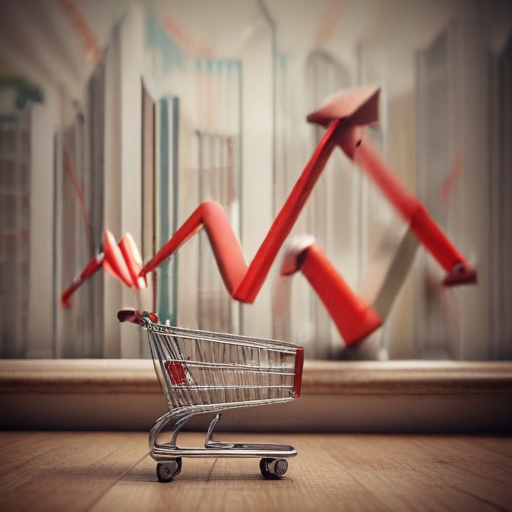U.S. inflation has accelerated, with notable increases in the costs of groceries, gasoline, and rent, contributing to challenges for families and businesses already grappling with high expenses. According to the latest report from the Labor Department, the consumer price index rose by 3% in January compared to the same month last year, an increase from December’s 2.9% and more than the 2.4% rate observed in September.
This continual rise in inflation is likely to prompt the Federal Reserve to reconsider any potential interest rate cuts. The overall inflation rate has remained above the Fed’s target of 2% for approximately six months, which has created significant political and economic hurdles. The unexpected surge in prices may dampen recent positive sentiments in the business sector, as markets reacted negatively, leading to a notable drop in the Dow and rising bond yields.
Economists have pointed out that many affluent consumers continue to spend vigorously, keeping prices elevated. Core consumer prices, excluding food and energy, rose by 3.3% compared to last January, and on a month-to-month basis from December to January, prices increased by 0.5%, marking the highest rise since August 2023. Grocery prices alone surged by 0.5% in January, driven by an alarming 15.2% spike in egg prices due to an avian flu outbreak affecting about 40 million birds.
Phil Hannon, vice president of operations at a consumer electronics store in Illinois, indicated plans to raise prices between 3% to 15% on various products due to the impact of tariffs on steel and aluminum. He mentioned that customers are becoming increasingly aware of impending price increases and purchasing appliances now to avoid future costs.
Federal Reserve Chair Jerome Powell addressed these inflation concerns in testimony before the House Financial Services Committee, affirming that while progress has been made regarding inflation, there is still work to be done. He indicated a desire to maintain current restrictive interest rates, which have remained at a two-decade high of 5.3% to combat inflation.
As some economists express concern over the relationship between tariffs and inflation, describing it as a potential ‘stew of uncertainty,’ they emphasize that the effects depend on how many imports are affected and the extent of those tariffs. Powell noted that not all tariffs lead to increased consumer prices, and the outcomes remain to be seen.
In summary, U.S. inflation continues to pose challenges as rising costs affect various sectors. While the Federal Reserve remains vigilant in its strategies, the economic landscape indicates a complex relationship between spending, inflation, and tariffs that will require ongoing attention and adaptation. This suggests a cautious approach moving forward, with hopes for stabilization in the near future, given strong consumer demand and ongoing adjustments in the market.
